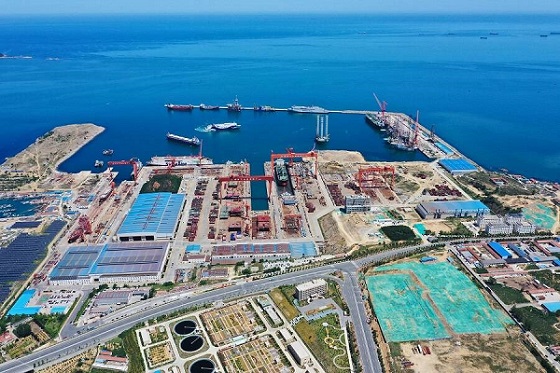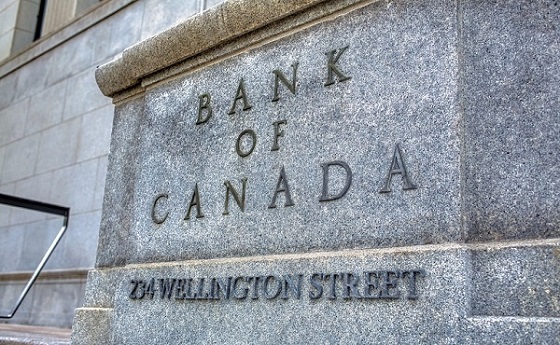Business
BC Ferries And Beijing: A Case Study In Policy Blindness
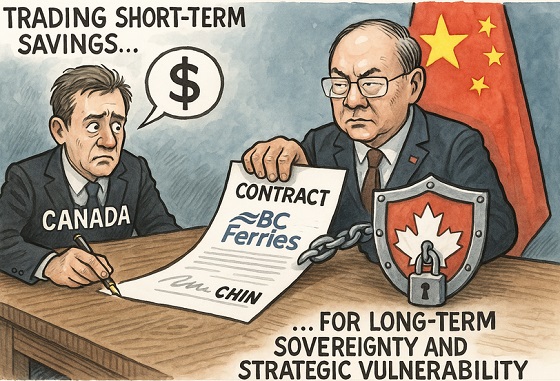
From the Frontier Centre for Public Policy
Scott McGregor warns BC Ferries’ contract with a Chinese state-owned shipbuilder reveals Canada’s failure to align procurement with national security. It is trading short-term savings for long-term sovereignty and strategic vulnerability.
BC Ferries’ recent decision to award the construction of four new vessels to China Merchants Industry (Weihai), a state-owned shipyard under the Chinese Communist Party (CCP), is a cautionary tale of strategic policy failure. While framed as a cost-effective solution to replace aging vessels, the agreement reveals a more critical issue: Canada’s persistent failure to align vital infrastructure procurement with national security and economic resilience.
The situation goes beyond transportation. It is a governance failure at the intersection of trade, security, and sovereignty.
Outsourcing Sovereignty
China Merchants Industry is part of a sprawling state-owned conglomerate, closely connected to the CCP. It is not merely a commercial player; it is a geopolitical actor. In China, these organizations thrive on a unique blend of state subsidies, long-term strategic direction, and complex corporate structures that often operate in the shadows. This combination grants them a significant competitive edge, allowing them to navigate the business landscape with an advantage that many try to replicate but few can match.
The same firms supplying ferries to BC are also building warships for the People’s Liberation Army Navy. That alone should give pause.
Yet BC Ferries, under provincial oversight, proceeded without meaningful scrutiny of these risks. No Canadian shipyards submitted bids due to capacity constraints and a lack of strategic investment. But choosing a Chinese state-owned enterprise by default is not a neutral act. It is the consequence of neglecting industrial policy.
Hybrid Risk, Not Just Hybrid Propulsion
China’s dominance in shipbuilding, now over 60% of global orders, has not occurred by chance. It is the result of state-driven market distortion, designed to entrench foreign dependence on Chinese industrial capacity.
Once that dependency forms, Beijing holds leverage. It can slow parts shipments, withhold technical updates, or retaliate economically in response to diplomatic friction. This is not speculative; it has already happened in sectors such as canola, critical minerals, and telecommunications.
Ordering a ferry, on its face, might seem apolitical. But if the shipbuilder is state-owned, its obligations to the CCP outweigh any commercial contract. That is the nature of hybrid threats to security: they appear benign until they are not.
Hybrid warfare combines conventional military force with non-military tactics (such as cyber attacks, disinformation, economic coercion, and the use of state-owned enterprises) to undermine a target country’s stability, influence decisions, or gain strategic control without resorting to open conflict. It exploits legal grey zones and democratic weaknesses, making threats appear benign until they’ve done lasting damage.
A Policy Void, Not Just a Procurement Gap
Ottawa designed its National Shipbuilding Strategy to rebuild Canadian capability, but it has failed to scale quickly enough. The provinces, including British Columbia, have been left to procure vessels without the tools or frameworks to evaluate foreign strategic risk. Provincial procurement rules treat a state-owned bidder the same as a private one. That is no longer defensible.
Canada must close this gap through deliberate, security-informed policy. Three steps are essential for the task:
Ottawa should mandate National Security reviews for critical infrastructure contracts. Any procurement involving foreign state-owned enterprises must trigger a formal security and economic resilience assessment. This should apply at the federal and provincial levels.
Secondly, when necessary, Canada should enhance its domestic industrial capabilities through strategic investments. Canada cannot claim to be powerless when there are no local bids available. Federal and provincial governments could collaborate to invest in scalable civilian shipbuilding, in addition to military contracts. Otherwise, we risk becoming repeatedly dependent on external sources.
Canada should enhance Crown oversight by implementing intelligence-led risk frameworks. This means that agencies, such as BC Ferries, must develop procurement protocols that are informed by threat intelligence rather than just cost analysis. It also involves incorporating security and foreign interference risk indicators into their Requests for Proposals (RFPs).
The Cost of Strategic Amnesia
The central point here is not only about China; it is primarily about Canada. The country needs more strategic foresight. If we cannot align our economic decisions with our fundamental security posture, we will likely continue to cede control of our critical systems, whether in transportation, healthcare, mining, or telecommunications, to adversarial regimes. That is a textbook vulnerability in the era of hybrid warfare.
BC Ferries may have saved money today. But without urgent policy reform, the long-term cost will be paid in diminished sovereignty, reduced resilience, and an emboldened adversary with one more lever inside our critical infrastructure.
Scott McGregor is a senior security advisor to the Council on Countering Hybrid Warfare and Managing Partner at Close Hold Intelligence Consulting Ltd.
Business
World Economic Forum Aims to Repair Relations with Schwab
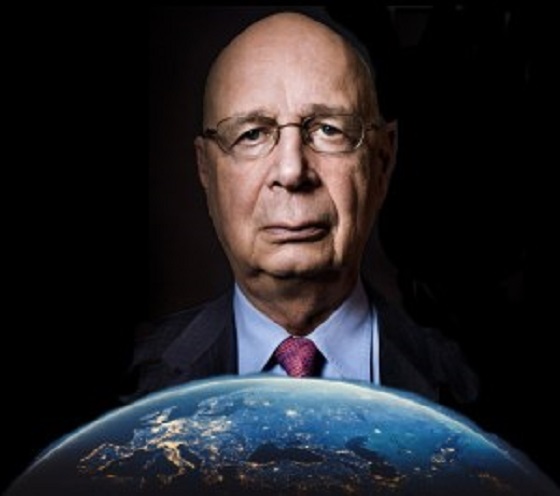
The whistleblower has always been anonymous, and it remains very suspicious that the very organization he created would turn on him after receiving an anonymous letter that they admitted may not have been credible.
World Economic Forum founder Klaus Schwab stepped down from his chairman position at the organization on April 20, 2025, amid accusations of fraud. Our computer had forecast that the WEF would enter a declining trend with the 2024 ECM turning point. This staged coup happened about 37 years after the first Davos meeting (8.6 x 4.3). From our model’s perspective, this was right on time. Now, Schwab and the WEF are working to repair ties.
An anonymous whistleblower claimed that Klaus Schwab and his wife collaborated with USAID to steal tens of millions in funding. The whistleblower has always been anonymous, and it remains very suspicious that the very organization he created would turn on him after receiving an anonymous letter that they admitted may not have been credible. Something like this would never be acceptable in any court of law, especially if it’s anonymous. It would be the worst or the worst hearsay, where you cannot even point to who made the allegation.
Back in April, the WEF said its board unanimously supported the decision to initiate an independent investigation “following a whistleblower letter containing allegations against former Chairman Klaus Schwab. This decision was made after consultation with external legal counsel.”
Now, the WEF is attempting to repair its relationship with its founder ahead of the next Davos meeting. Bloomberg reported that the WEF would like to “normalize their relationship [with Klaus Schwab] in order to safeguard the forum and the legacy of the founder.”
Peter Brabeck-Letmathe has replaced Schwab for the time being, but is less of a commanding force. Schwab’s sudden departure has caused instability in the organization and its ongoing mission. Board members are concerned that support for the organization will begin to decline as this situation remains unresolved.
The World Economic Forum’s annual revenue in 2024 was 440 million francs ($543 million), with the majority of proceeds coming from member companies and fees. Yet, the number of people registered to attend the 2025 Davos event is on par if not slightly exceeding the number of participants from the year prior.
Schwab’s departure has damaged the Davos brand. There is a possibility that the organization is attempted to rebrand after Agenda 2030 failed. The WEF attempted to move away from its zero tolerance stance on ESG initiatives after they became widely unpopular among the big industry players and shifting governments. The brand has attempted to integrate the importance of digital transformation and AI to remain relevant as the tech gurus grow in power and popularity. Those who are familiar with Klaus Schwab know the phrase, “You will own nothing and be happy.” These words have been widely unpopular and caused a type of sinister chaos to surround the brand that was once respected as the high-brow institution of globalist elites.
European Central Bank President Christine Lagarde was slated to replace Schwab in 2027 when her term ends, and all reports claimed that he was prepared to remain in the chairman role for an additional two years to ensure Lagarde could take his place. What changed seemingly overnight that would cause the organization to discard Schwab before he was due to retire?
Schwab denies any misconduct and filed lawsuits against the whistleblowers, calling the accusations “calumnious” and “unfounded.” He believes “character assassination” was the premise of the claims.
I am no fan of Klaus Schwab, as everyone knows. I disagree with his theories from start to finish. Nevertheless, something doesn’t smell right here. This appears to be an internal coup, perhaps to distract attention from the question of alleged funds for the WEF from USAID, or to try to salvage the failed Agenda 2030. Perhaps they will claim that no misconduct had occurred since DOGE did not raise concerns or there is a possibility that those behind the internal coup are concerned that Schwab’s counter lawsuit could uncover new corruption. The investigation into Schwab has not concluded, but after only three months, the WEF would like to wrap it up. It appears that the WEF does not want to welcome Schwab back; rather, they would like to ensure an amicable resolution to maintain both the brand’s reputation as well as the founder’s.
Business
Behind the latest CPI Numbers: Inflation Slows, But Living Costs Don’t
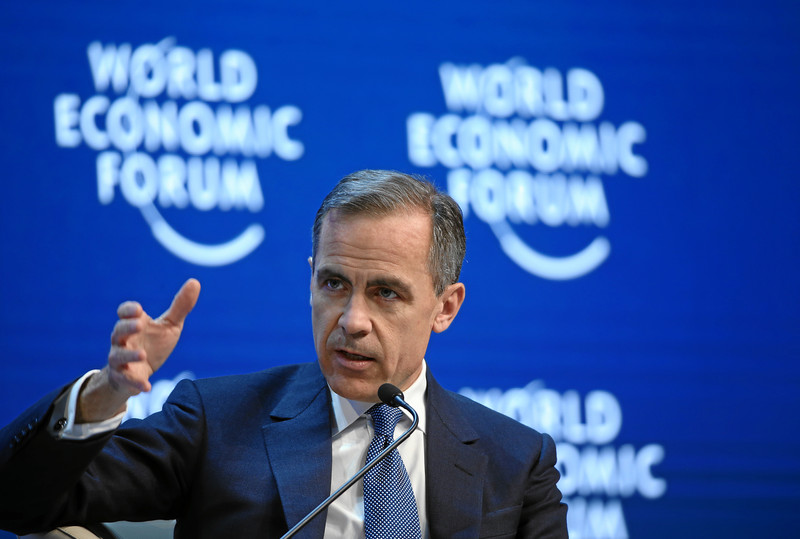
Behind the 1.7% headline, falling gas prices mask deeper affordability issues—from rising rents and mortgage costs to inflated essentials still burdening working Canadians.
Canada’s latest Consumer Price Index (CPI) report dropped this week, and if you believe the headlines, things are looking up. The Trudeau government is gone, Mark Carney is in charge, and the narrative from the media-industrial complex is that inflation is under control. The truth, however, is far more complicated—and much uglier.
Let’s break it down.
The Good
Let’s start with the headline everyone’s pretending is a victory: inflation is at 1.7%. That’s the lowest in recent memory. Great, right? Well, before we throw a parade for Mark Carney and the ghost of Justin Trudeau, let’s be honest about why that number dropped.
It’s because they killed the carbon tax. That’s it. The federal consumer carbon levy—gone as of April 1st—took a sledgehammer to gasoline prices. Down 15.5% year-over-year. That’s not Liberal brilliance; that’s what happens when you stop punishing working people for heating their homes and driving to their jobs. It’s the most obvious economic lesson in the world—and it took a political collapse to learn it.
And sure, some other costs went down too. Airfare, travel tours, natural gas—all dipping. But let’s be honest here: how many average Canadians are flying to tropical resorts right now? Those declines are meaningless unless you’re upper-middle class or live in a city with piped-in gas. For most people, this isn’t relief—it’s background noise.
So yes, things look “better” on paper. But that’s only because Ottawa stopped making them actively worse. Don’t confuse less harm with actual help.
The Bad
Now, if you strip away the smoke and mirrors—take out gas and energy, the very components that dropped because the Liberals stopped interfering—you’ll find core inflation is still sitting at 2.7%. That’s above the Bank of Canada’s target. So while they’re bragging about a “cooling economy,” everything that actually matters to working people is still getting more expensive.
Start with rent—up 4.5% nationwide. And in Ontario, where they’re spinning it as a “slowdown,” it’s still climbing at 3%. Let’s be blunt: this is the Trudeau housing crisis in full bloom. Years of unchecked immigration, foreign investment, and anti-building regulations have created a market where young Canadians can’t dream of buying, and now can’t even afford to rent. This isn’t stability—it’s metastasis.
And then there’s food. Up 3.4% year-over-year. That’s every single trip to the grocery store hitting harder. Why? Because for years, this government pumped the economy full of cheap cash, shut down critical supply chains, and slapped on regulation after regulation—then acted shocked when bread and eggs cost more than your phone bill.
So no, the bad news didn’t disappear. It’s just buried under a layer of statistical gaslighting.
The Ugly
This is where the mask really slips.
Let’s start with mortgage interest—up 6.2% year-over-year. That’s the 21st consecutive month of rising costs for homeowners. Why? Because the Carney–Trudeau economic cartel raised rates into the stratosphere to fix the very inflation they helped ignite. Now the middle class is getting crushed under monthly payments they can’t afford, and the Liberal elite shrugs, sipping Chardonnay in their fully paid-off Ottawa brownstones.
But it doesn’t stop there.
Telephone services shot up 7.2% in just one month. Remember when Trudeau promised affordable internet and more competition in telecom? Yeah—didn’t happen. Instead, we’ve got an oligopoly of pampered monopolies bleeding Canadians dry, with zero consequences. They feast, you pay. That’s the Liberal model.
And then there’s the EV scam—the real gem of elite technocracy. New car prices are up 4.9%, driven mostly by electric vehicles. Why? Because the government is subsidizing them with your tax dollars while simultaneously making it harder and more expensive to buy a gas-powered car. They call it “green policy”—you call it unaffordable transportation.
This isn’t economic policy. It’s social engineering through price pain. And it’s working—just not for you.
Final Thoughts
So here’s where we are: inflation is down—but not because of any real reform. It’s down because the Liberals were forced, kicking and screaming, to repeal a tax that never should’ve existed. Meanwhile, the real cost of living continues to grind down working Canadians, and the architects of this disaster are still in power—just with a different name on the door.
Mark Carney, Trudeau’s former banker-in-chief, is now the frontman for the same agenda: globalist economics, central planning, and performative concern for affordability—all while mortgage costs rise, rent stays unaffordable, and you get nickeled and dimed on everything from food to phone bills.
They’ll tell you this is progress. It’s not. It’s a managed decline, and the only reason it’s slowing is because the wrecking crew paused long enough to read the polls.
Don’t be fooled by the numbers. This is what it looks like when a political class tries to walk back years of economic sabotage without ever admitting fault. They won’t stop unless you make them.
Until then, this isn’t a recovery—it’s a recalibration of how much you’re allowed to lose. And the people who built the system want you to be grateful for it.
Subscribe to The Opposition with Dan Knight .
For the full experience, upgrade your subscription.
-

 Alberta2 days ago
Alberta2 days agoAlberta Next Takes A Look At Alberta Provincial Police Force
-

 Business2 days ago
Business2 days agoFederal government should finally cut Trudeau-era red tape
-

 Alberta2 days ago
Alberta2 days agoCanadian Oil Sands Production Expected to Reach All-time Highs this Year Despite Lower Oil Prices
-

 Alberta2 days ago
Alberta2 days agoThe permanent CO2 storage site at the end of the Alberta Carbon Trunk Line is just getting started
-

 armed forces1 day ago
armed forces1 day agoIt’s not enough to just make military commitments—we must also execute them
-
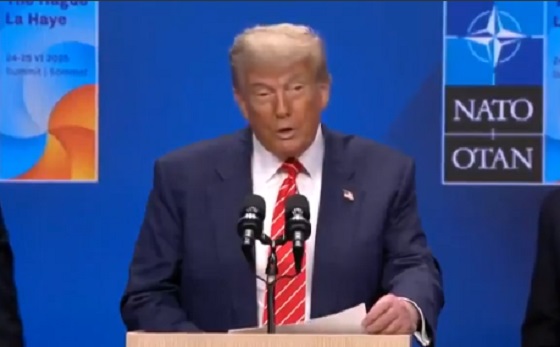
 conflict2 days ago
conflict2 days agoFordow obliterated: Israeli report confirms nuclear site inoperable
-

 Business23 hours ago
Business23 hours agoOttawa Funded the China Ferry Deal—Then Pretended to Oppose It
-

 COVID-192 days ago
COVID-192 days agoNew Peer-Reviewed Study Affirms COVID Vaccines Reduce Fertility









